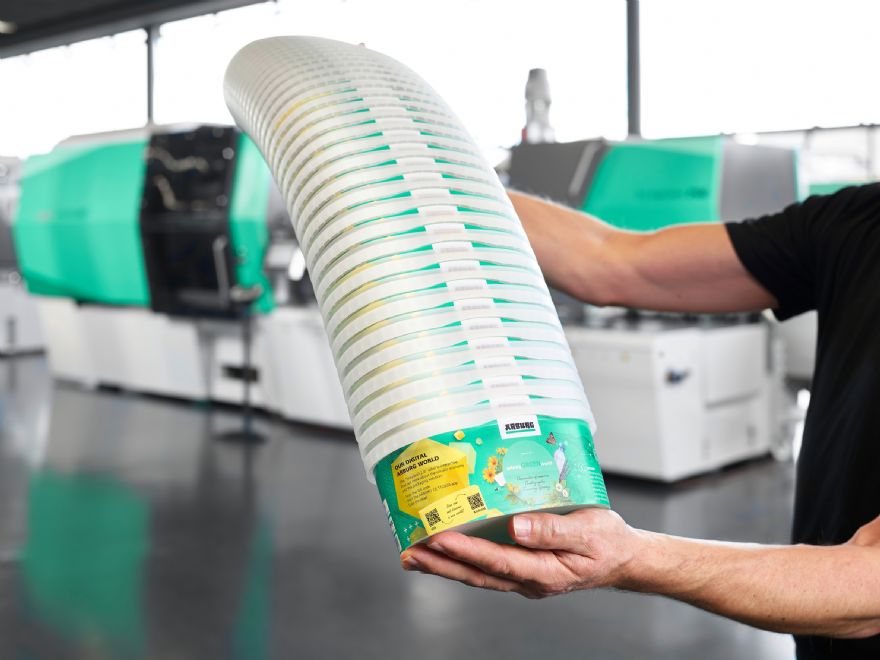
With its ‘ArburgGreenWorld’ programme, the German company
Arburg says it is committed to the ‘circular economy and resource conservation’, with work that includes a ‘HolyGrail2.0’ project for separating plastic packaging into homogenous types via ‘digital watermarks’.
The project, which recently moved to the ‘next phase’ in September 2020, is being taken forward under the auspices of AIM — the European Brands Association.
More than 85 companies and organisations are involved in the project, of which Arburg is the only manufacturer of injection moulding machines.
Bertram Stern, Arburg’s packaging and circular economy manager, said: “As early as the pilot project phase of HolyGrail, we were able to demonstrate the fantastic potential of the digital watermark technology based on the example of ‘IML containers’ made from mono-material.
“It is now all about rolling out the project around Europe with the aim of using this technology for the homogenous sorting and separation of plastic packaging on a large scale as well as to facilitate smart and cost-effective recycling.”
Arburg is involved in various working groups as part of the Europe-wide project, which is due to be completed in the summer of 2022.
AIM is coordinating activities from its headquarters in Brussels, in compliance with current European Union legislation, which foresees that by 2030 all plastic packaging around Europe will be reusable, easily recyclable or compostable. The target reprocessing and recycling rate is 60%.
Efficient and high-quality recycling relies on plastic waste being collected appropriately and separated in the most effective way. Furthermore, all industrial processes forming part of the materials cycle must be digitalised and interlinked, which is where the HolyGrail2.0 initiative for digital watermarks on packagings comes in.
These watermarks are codes the size of postage stamps that are applied directly to the surface of a product or to its label but are not visible to end users and consumers.
The individual tile patterns are created through micro-topological variations in the carrier material and multiplied to create a graph that resembles a mosaic.
They create a ‘digital passport’, a fragment of which is enough to call up information about the manufacturer, for example, or about the materials processed and whether or not the packaging is suitable for food.
Arburg has been working intensively for some time now to gain experience of the technology based on digital watermarks. In the pilot phase of HolyGrail, the packaging version of a hybrid Allrounder 820 H was able to produce pairs of IML containers made from bio-based PP in a cycle time of 5.8sec.
An IML automation system inserted the associated PP labels from partner company Verstraete and removed the finished parts at the same time. The labels contained the digital watermarks.
Information about the contents of the mono-material packaging as well as the use and disposal of the product can be assessed via an app.